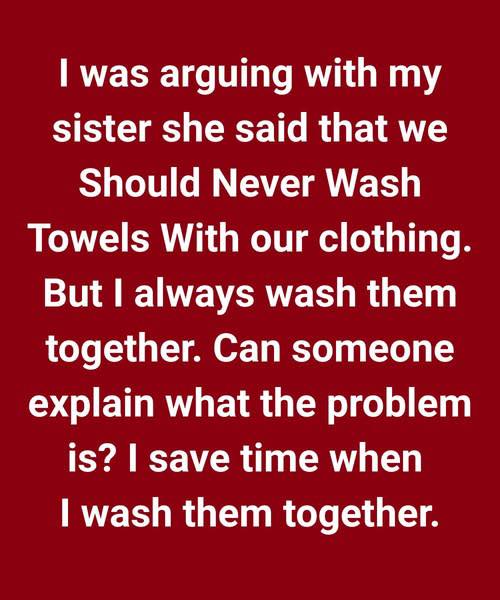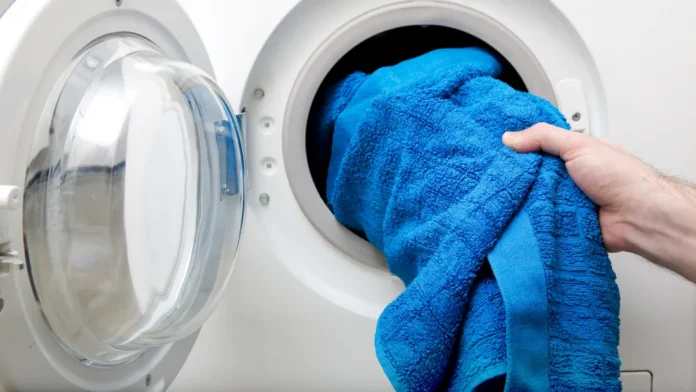

Let’s be honest: after a busy week, it’s tempting to toss towels and clothes into the same load and hit “Start.” But that innocent shortcut often backfires. While combining them might seem efficient, it can actually wear out your items faster, dull your favorite clothes, and even spread unexpected germs.
I used to do it, too—until I began noticing lint-covered tees, stiff towels, and clothes that just didn’t feel right after washing. That’s when I dug deeper and discovered there’s big laundry logic behind separating towels from clothing. Here’s what I learned.
1. Towels Demand a Tougher Cleaning Cycle
Think about how you use towels—they’re heavy, plush, and built for absorbing water. After one use, they’re soaked and laden with soap residue, body oils, and skin cells. To truly clean them, towels need:
- Hot water to break down oils and removed build-up,
- Longer cycles so that all that absorbency is thoroughly cleansed, and
- Heavier agitation to get into those looped fibers.
Clothes, on the other hand, especially delicates, don’t require—or tolerate—this harsh treatment. A hot, prolonged wash may shrink, fade, or stretch your favorite shirts, socks, and underwear. So, when you combine towels and clothes, you end up under-washing towels (leaving them dingy) or over-washing clothes (leading to damage). Neither outcome is ideal.
2. The Menace of Lint
If you’ve ever pulled a soft, plush towel from the dryer, you’ve seen lint—tiny fibers that shed and cling. Mix towels and clothes, and the result is often an unwanted layer of fuzz that sticks to darker or synthetic fabrics. Suddenly, your clothes look worn out, unkempt, and fuzz-covered—definitely not the image you want, whether it’s for a family barbecue or a quiet night at home .
Lint isn’t just cosmetic. It can clog pocket seams, build up in dryer vents, and even make towels less absorbent over time. As towels shed fibers, they’re slowly losing their plush character. Separating laundry loads means less lint fallout and longer-lasting towels and wardrobe pieces.
3. Fabric Conflict: Towels vs. Clothes
Want to test fabric strength? Strap a zipper to a towel and turn on the washer. Towels are tough, but the abrasive rubbing of stiff towel loops can weaken delicate fabrics. That zipper could:
- Stretch shirt collars,
- Damage pant seams, or
- Cause pilling on soft fibers.
Flip roles: delicate clothes rubbing against towel loops can create tiny snags or pills. It’s like mixing sandpaper and silk—one wears on the other. The best offing? Keep them separated.
4. A Hygiene Wake-Up Call
We often think of towels as fresh, but remember: these are the items that dry our bodies. A good portion of skin cells, sweat, moisture, and even pet dander find their way into towel fibers. That makes them a breeding ground for bacteria—especially if you hang them to dry and re-use them for days on end .
Wash towels properly: hot water and a full soak cycle. Washing them with everyday clothes could spread those germs onto items that touch your skin—like undergarments and shirts. If you live with older adults or are in contact with vulnerable people, keeping laundry separate isn’t just about smell—it’s about health protection.
5. Uneven Dry Time: A Common Frustration
Bulkier towels need more time to dry. When mixed in with thinner clothes, your clothes might over-dry—leading to shrinkage and stiffness—while towels remain damp and heavy. That uneven cycle pushes your dryer to work overtime and drives up energy bills.
If you’ve ever found socks still damp after the cycle ends, while thick towels are crisp and over-dried, you’ve seen this in action. Separating loads helps each type of fabric get just what it needs—from wash to dry.
6. Extend the Life of Your Laundry
It’s easy to toss everything together and move on. But fabric care matters. Over time, combining towels and clothes creates a cycle of deterioration—color fading, shrinkage, piling, and break-down of fibers. Every dollar you spent on that fancy bath towel or work blouse deserves better.
Preserve your wardrobe and linklines by washing laundry separately, using the recommended temperature, cycle length, and drying time for each item. You’ll notice:
- Softer towels,
- Brighter colors,
- Better fitting clothing,
- Reduced energy consumption,
- Less downtime with lint-clogged lint traps or dryer sheets.
Laundry Best Practices: A Pro’s Guide
To keep clothes and linens in top shape—as near-proof as it gets—follow this weekly routine: